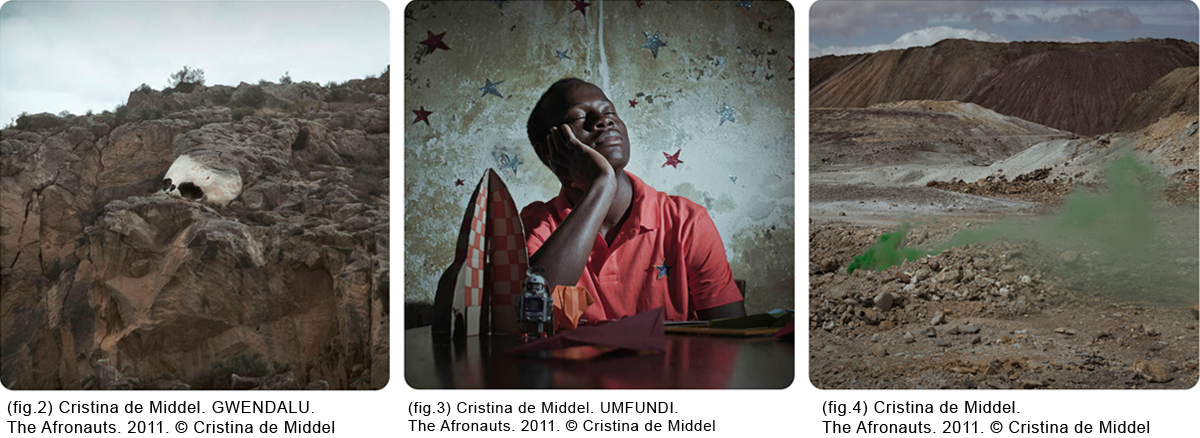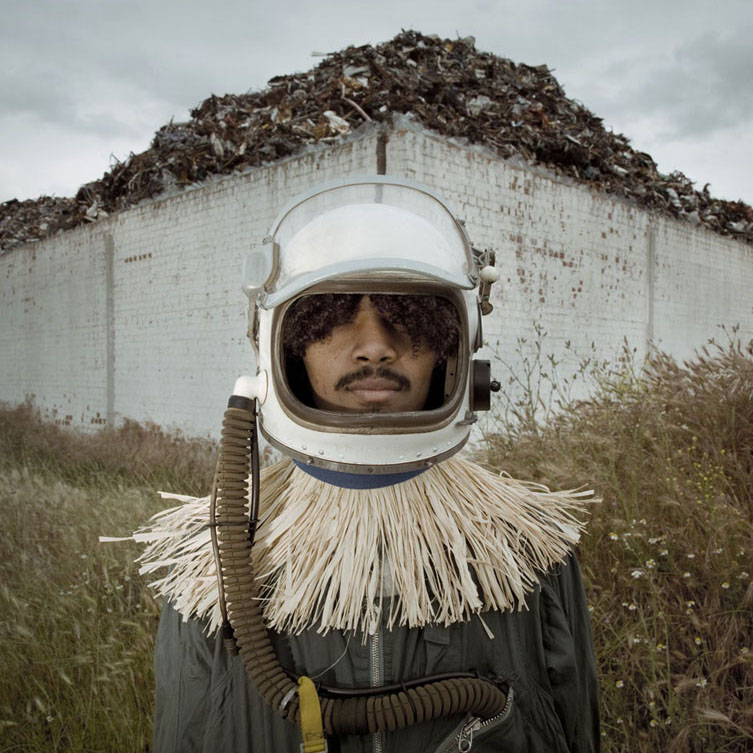The Alicante-born artist Cristina de Middel has earned herself a place on the international stage thanks to her strong photographic portfolio. Her work has gained recognition in prestigious awards, and she is currently one of the finalists in the Deutsche Börse Photography Prize 2013.
(fig.1) Cristina de Middel. JAMBO. The Afronauts. 2011. © Cristina de Middel
The Alicante-born artist Cristina de Middel has earned herself a place on the international stage thanks to her strong photographic portfolio. Her work has gained recognition in prestigious awards, and she is currently one of the finalists in the Deutsche Börse Photography Prize 2013.
The Afronauts is her most successful and popular photographic project to date. It encompasses all the elements that characterise her work as a whole, in particular the way she makes the viewer reflect through her use of irony.
Recently, The Afronauts has seen the birth of its own iPad and iPhone version, launched by the artist herself a few days ago.
Any attempt to send out a message that resonates strongly in society is fraught with difficulty, seeing as there are many ways to do this. The method chosen by Cristina de Middel has humour – one of the most important characteristics of her work – at its core.
Born in Alicante in 1975, de Middel has a degree in fine art, specialising in drawing, from the Universidad Politécnica de Valencia, as well as a masters in photography from the University of Oklahoma, and a postgraduate degree in photojournalism from the Universitat Autónoma de Barcelona. Following that interest in photojournalism, she has worked as a professional photographer for newspapers and various NGOs, and now contributes to well-known magazines such as Colors, Esquire and Yo Dona, amongst others.
It is perhaps thanks to her extensive career in photoreportage, alongside her artistic training, that de Middel manages to achieve in her work a very firm balance between aesthetics and narrative, with the two going hand-in-hand, although in her personal projects she liberates herself from photojournalism’s binding requirements of veracity. Nonetheless, the line between reality and fiction is sometimes very fine, and it is that very phenomenon that the artist reflects upon in her work, often offering a subjective interpretation of reality, moving truth into the land of the ambiguous.
A superb technical hand gives de Middel the capacity to move with ease between different photographic genres and registers, and while journalistic reportage demands a more formal, realist vision, in her personal work she allows herself to move, in terms of her aesthetics, firmly in the direction of painting, something most clearly detectable in the way she frames her compositions, the delicate treatment of form and an emphasis on the tactile. Sense of humour, irony and a playful character, as much as that subjective interpretation of the narrative truth, are present in two of the photographer’s most distinguished collections: Poly-Spam and The Afronauts.
The former was first exhibited in 2009 at the PHotoEspaña festival. The work is made up of eight photographs that narrate some of the stories described in spam the artist received over the course of a year, a series of tall tales from senders who say they are about to die, have large inheritances they want to give to their correspondents, and the like. These stories gave Cristina de Middel the inspiration to create photographic reconstructions of the senders’ faked predicaments.
The Poly-Spam exhibition was organised as an open project, and was completed with an installation in which the viewers could photograph themselves.

The latter series, The Afronauts (fig. 1), meanwhile, is the most recent and the most distinguished work of Cristina de Middel.
The story of this series goes back to 1964, when Zambia, recently independent from the United Kingdom, launched a space programme with the intention of beating the USA and the European Union to the moon. The initiative was led by Zambian schoolteacher Edward Makuka, whose objective was to use a catapult-based system to send a rocket to the moon with a crew of 10 astronauts, a 17-year-old girl and two cats. The project included a training course for this crew, comprised of a series of exercises including being rolled downhill in a barrel – simulating landing – and being pushed hard on a swing, to get the astronauts ready for the weightless they would face in space. While Makuka’s belief in the project was steadfast, the Zambian government, as could perhaps have been expected, eventually rejected the programme, depriving it of any financing. In addition, the young girl who would have been part of the crew became pregnant by one of the astronauts, a setback that would eventually result in the project being abandoned completely. Despite everything, Makuka never saw his plan as being at all outlandish, and wrote a series of newspaper articles claiming that Russia and America, hoping to frustrate their rival, had hatched a plan to kidnap the girl.
It is from this story that Cristina de Middel starts developing The Afronauts (fig. 2). The series of forty images portrays the story as it might have been documented fifty years ago, creating a fantastical narrative brimming with a spirit of ambition. The mocked-up depictions the artist brings together are executed with the utmost respect, approaching the story in the spirit of toil and passion it was conceived.
The project The Afronauts (fig. 3) includes, alongside the photographs, a book created by the artist which also contains archive images, drawings and documents that complete de Middel’s fascinating work. The creation of the book was part of the plan from the very beginning of the project, as the definitive tool to help people properly understand the Zambian project and to give it the platform its creator had planned for it. The flawless execution of the book has lead it to be considered internationally as one of the best photography books of 2012.
The completed work, which won the artist a place as one of four finalists in the Deutsche Börse Photography Prize 2013, is a contemplation of what we are accustomed to perceive as reality, at the same time as bringing with it a delicate criticism of the attitude and prejudice of the First World towards the African continent as a whole.
The Afronauts (fig.4) is a story of hypothetically completed dreams. It is a firm vocalisation of support for those who believe in what they do and are passionate about achieving, converting their intentions, high-flown or not, into a way of life to be led with gusto.
[su_note note_color=”#eaeae9″]Translated by Sam Burne James[/su_note]

